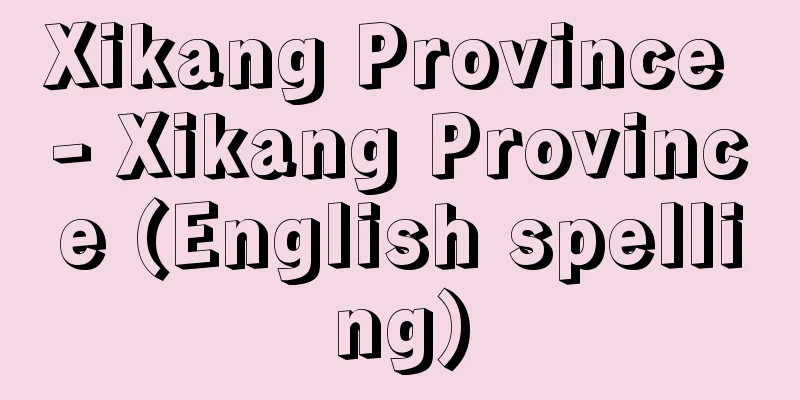Manners novel - Fuuzokushosetsu

|
There used to be a term called "fūzoku shosetsu" ("manners novel"), but it is now almost obsolete. The dictionary definition of fūzoku shosetsu is a novel that mainly depicts the state of the world, human feelings, and customs (Kojien), but in the narrow sense, as Nakamura Mitsuo put it in his "Fūzoku shosetsuron" (1950), the term "fūzoku shosetsu" was used to describe novels from a certain period of modern Japanese fiction. "Secular" novels, such as those by Niwa Fumio and Funahashi Seiichi, which went from naturalistic realism and personal novels to proletarian literature and depicted the state of the world, human feelings, and customs of modern society. In the sense that they are neither pure literature nor popular literature, they are similar to literary works in the genre named "middle novels," but originally, as Tsubouchi Shoyo said in "Shosetsu Shinzui," novels depict "human feelings, state of the world" and "customs," and depicting customs is synonymous with being a novel. Novels by Balzac, Maupassant, Dostoevsky, and Tolstoy can also be called "novels of manners" in a broad sense, and the equation "novel = manners" also holds true. Originally, the word "shousetsu" (novels) meant "history novels," and began as street corner lecturers who would tell small stories about the corners of society and in everyday life, as opposed to the "history stories" and "daisetsu" (great stories that discussed the state of the nation) that had fallen out of the official histories. In Japan, "setsubun monogatari" (narrative stories) began when people of refinement such as the Uji Dainagon wrote down the rumors, folklore, and legends of the world as things that had happened "in the past." These were stories about politicians, military commanders, bureaucrats, and thieves; funny stories about women and religious figures, servants and maids; stories of adultery and fornication; and strange folklore and fantasy stories about ghosts, monsters, and animals. Indeed, it can be said that the "stories" that served as the prototypes of modern novels took customs as their subject and had as their main purpose the depiction of such customs. The world of humorous stories and human interest stories set in the Edo period's red-light districts is also a "novels of manners and customs" that deals with the customs of the time, and this tradition has been carried over to the world of modern novels as the "flower novels" of writers such as Nagai Kafu. From one perspective, the "total novels" that were talked about for a time after the war could also be seen as a return of the "novels of manners and customs." Modern novelists such as Haruki Murakami, Ryu Murakami, Eimi Yamada, and Banana Yoshimoto are also trying to capture the "customs" of modern society in their own ways. The term "customs novel" may have become obsolete, but the connection between novels and customs transcends eras and writers. [Minato Kawamura] "Thoughts and Customs" by Jun Tosaka (1936, Mikasa Shobo)" ▽ "A Theory of Novels on Customs" by Mitsuo Nakamura (1950, Kawade Shobo)" ▽ "The Essence of Novels" by Shoyo Tsubouchi (Iwanami Bunko) [References] | books| | | | | | | | | | | | | |Eimi |Source: Shogakukan Encyclopedia Nipponica About Encyclopedia Nipponica Information | Legend |
|
かつては風俗小説ということばがあったが、現在ではほぼ死語となっている。風俗小説は辞書的な定義では世態や人情、風俗を描くことを主たるものとしている小説のことだが(『広辞苑』)、狭義には中村光夫がその『風俗小説論』(1950)で展開したように、日本の近代小説のある一時期の小説作品について、「風俗小説」という言い方がなされたのである。丹羽文雄や舟橋(ふなはし)聖一の作品のような、自然主義リアリズムや私小説から、プロレタリア文学を経て、現代社会の世態、人情、風俗を描き出した「世俗」的な小説。純文学でもなく、大衆文学でもないという意味で、「中間小説」と名づけられたジャンルの文学作品にそれは似ているが、本来は坪内逍遙が『小説神髄』のなかでいっているように小説というものは「人情・世態」や「風俗」を描くものであって、風俗を描くことと小説であるということとは同義なのであった。バルザックやモーパッサン、ドストエフスキーやトルストイの小説も広義には「風俗小説」といえるものであって、小説=風俗という等式も成り立つのである。 もともと、小説は稗史(はいし)小説の意であり、正史からこぼれ落ちた稗史や、大説、すなわち天下国家を論じた大いなる説に対して、世間や社会の片隅や日常の些細(ささい)な事件や現象についての小さな説を、街角で講釈師たちが演じたのが始まりである(中国)。日本では宇治大納言のような風流人が、世間の噂(うわさ)や伝承や伝説を「今は昔」のこととして筆録したのが、「説話物語」の始まりであり、小説の濫觴(らんしょう)(ものの始まり)だった。政治家や武将、官僚や盗賊の話、女と宗教者、下人と下女の笑い話、姦通(かんつう)や姦淫(かんいん)の話や、幽霊・妖怪(ようかい)・動物にまつわる怪奇な伝承と幻想の物語。まさに、それらの近代小説の原型としての「物語」は、風俗を対象とし、風俗を描き出すことをその主眼としていたといえる。 江戸時代の遊廓(ゆうかく)を舞台とした洒落(しゃれ)本や人情本の世界も、当時の風俗を相手とした「風俗小説」であり、それは永井荷風などの「花柳小説」の伝統として現代小説の世界にまで引き継がれている。戦後一時期語られた「全体小説」も、また一面からみれば「風俗小説」の再来といえないこともない。 村上春樹、村上龍(りゅう)、山田詠美(えいみ)、よしもとばなな(吉本ばなな)などの現代小説の担い手たちも、それぞれのやり方で現代社会の「風俗」をとらえようとしている。「風俗小説」ということばは廃れたかもしれないが、小説と風俗との結び付きは時代と作家を越えているのである。 [川村 湊] 『戸坂潤著『思想と風俗』(1936・三笠書房)』▽『中村光夫著『風俗小説論』(1950・河出書房)』▽『坪内逍遥著『小説神髄』(岩波文庫)』 [参照項目] | | | | | | | | | | | | | | | |出典 小学館 日本大百科全書(ニッポニカ)日本大百科全書(ニッポニカ)について 情報 | 凡例 |
<<: Common customs and customs
Recommend
Unganji Temple Tiger Hill Pagoda
…It is said to be the tomb of King Helü of Wu (re...
Dionisii (English spelling)
Russian icon painter, c.1440-c.1502. In the second...
Euripides - Euripides (English spelling)
He is one of the three great tragic poets of anci...
Champā (English spelling) Champa
…Located on the south bank of the Ganges River. C...
Sandbur
Its Japanese name means Chestnut Bur (chestnut bur...
Kirikumi (Noh) - Kirikumi
...Among the Hayashigoto kodan, which consists of...
Azumime
…The Azumi clan had been controlling the fisherme...
In Aouanrhat (English spelling)
…The area is now a completely dry, rugged mountai...
Thumb piano
... The name Sanza is the name of a region in the...
Prince Sukehito
Year of death: 28th November 1119 (31st December 1...
Mao Shan School - Mao Shan School (English)
A sect of Chinese Taoism. It is also called the Ma...
Goldfaden, A.
...Notable figures in the field of novels include...
Cooper, KH
...Both are technical terms in exercise physiolog...
Ctenocephalides - Ctenocephalides
A large foliaceous lichen of the family Pelbriacea...
Void - kuugou
〘Noun〙 A Buddhist term. One of the four kalpas of ...









